

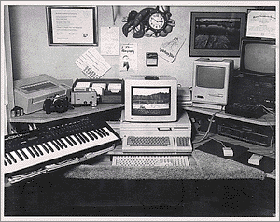 My New Desk DesignI built my first desk design in an attempt to create a more ergonomic environment for me to work within. I developed carpal tunnel problems actuating cameras in the Consumer Test Lab. Support for my arm was important to acheiving the proper wrist angle, which would allow me to work for longer periods of time. I've designed several new designs since, but have not built either yet. You can view them in the Desk Designs section of this website. On the desk is my original Mac 128K, which I'd upgraded to 2Mb with a MonsterMac piggyback board, my new Macintosh II and RGB monitor, Olympus 35mm camera, ImageWriter printer, Yamaha DX11 synthesizer, under the shelf to the right a Kodak MVS Digital Audio Deck. above that audio system & TV. The keyboard and mouse wrist pads were carpeted in a lovely brown shag left over from the carpet I believe. The Maine clock on the wall hangs in my new studio today, where I hope to finally build my Zero Gravity Work Pod design. 5-Year Phantom Plan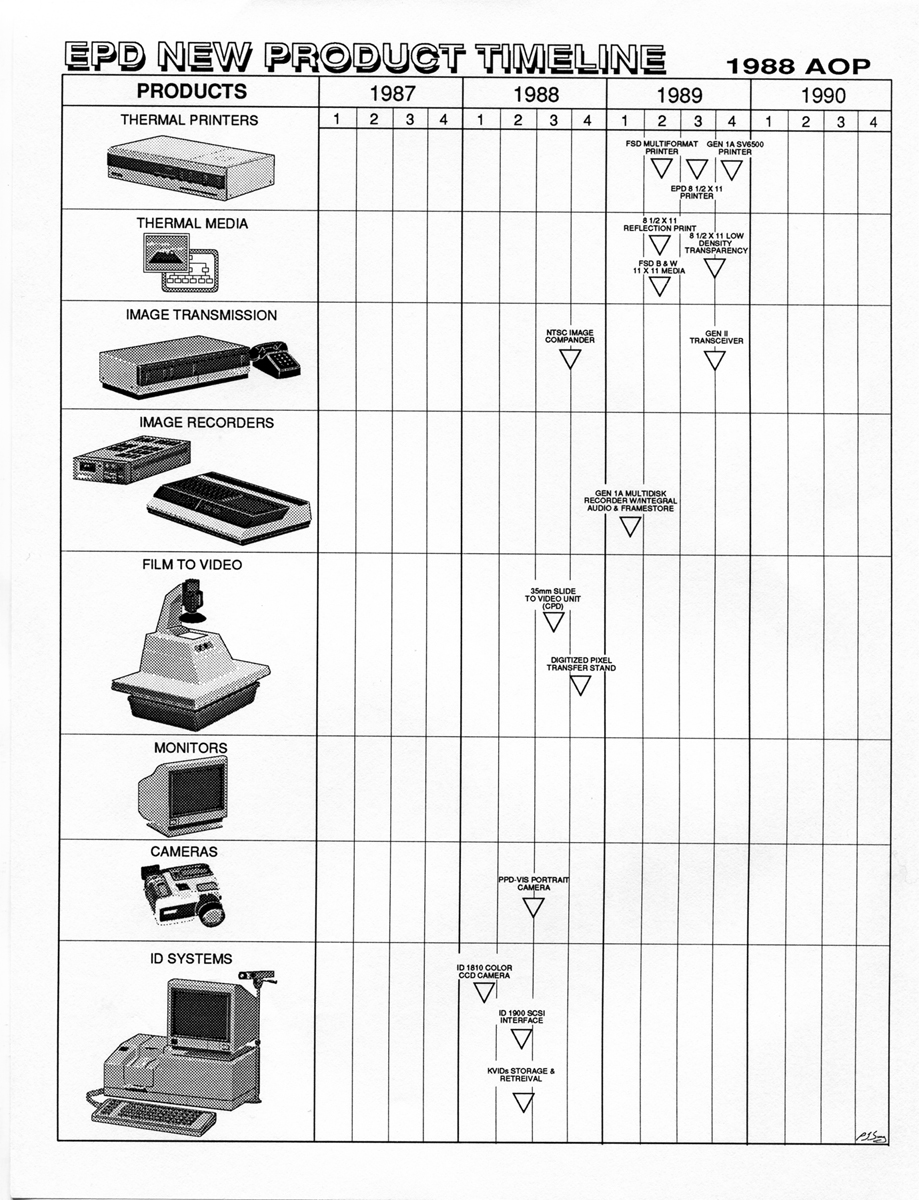
Click Image to View (requires PDF plugin) or Downlad a PDF of the full Brochure No Digital Products on this One! New Applications Lab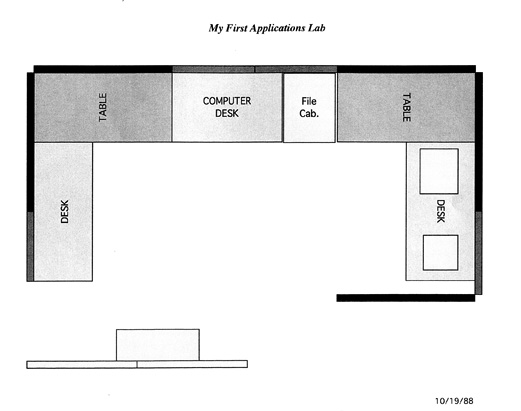
After office mates Bruce and Daryl moved out, my office area was expanded to form the first "Applications Lab". Once my equipment starting arriving on a regular basis, I had to move into the old Instant Printer lab where there was more room. Jobs Annouces Next Computer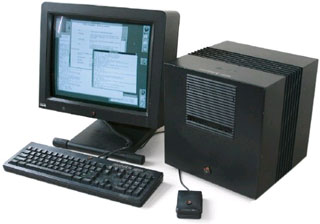
Several years after being fired from Apple by John Sculley, Steve Jobs introduced his latest project, the Next Cube. Based on the UNIX operating system, it offered a Mac-like experience on a more powerful platform. Thankfully, it eventually failed. Which allowed Steve to come back to Apple and save it from the uninspired products it was producing under Sculley. PhotoMac 1.0 Color Image Editing Software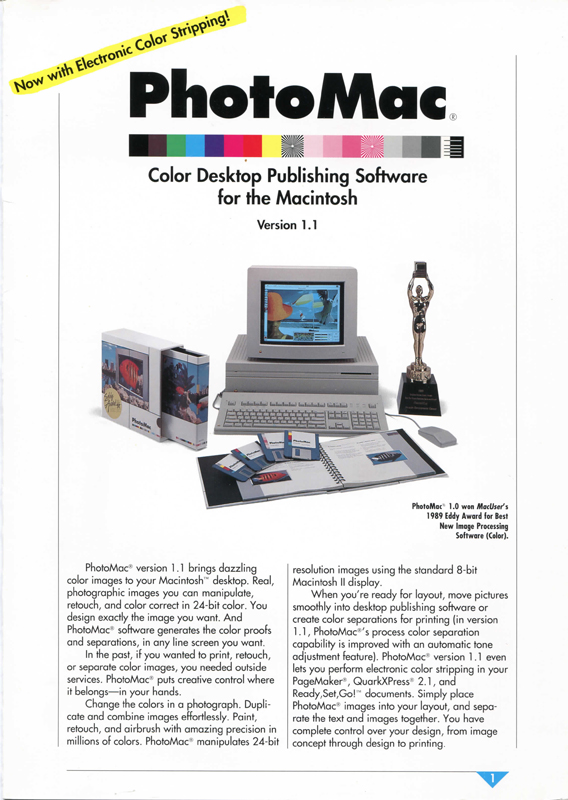 Click Image to View (requires PDF plugin) or Downlad a PDF of the full Brochure The most significant software release of 1988 was the much hyped introduction of PhotoMac 1.0 by Data Translation, the first "color" image editing program. The developer had approached Kodak with copies of the software, looking for beta testers. As was becoming the norm, I was given a copy to check it out. PhotoMac had developed a dithering solution for displaying 24-bit images on 8-bit displays. Their technique used the 256 available colors on an 8-bit display in an arrangement of dots that fairly closely represented the original image colors. Image editing was a bit on the clunky side as I remember, probably because it had to work within the constraints of RAM on the first Mac II machines, which was a max of 8 Mb's. The introduction of true 24 bit display cards was still a ways off, waiting on the release of 32 bit Quickdraw. I had the opportunity to beta test a board RasterOps had developed. However, it was painfully slo to use, because each color channel had to be drawn in one at a time, Everytime you made a change to the image it had to redraw the screen. This was the only way to get around the lack of low level system support for 24 or 32 bit images at the time. 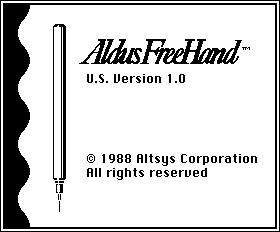 Aldus FreehandAldus introduced their answer to Adobe Illustrator with Freehand, a bezier based drawing program with a a bit friendlier user interface and some new features. Of course I had to have a copy. A number of my friends in marketing were always looking to make strategic deals with these software companies so I acquired many new packages through them. I would evalute the programs and see where we might briing value to users with Kodak technology. Raster Ops 24-bit Display CardsDespite the lack of 24/32 bit support by the MacOS, a few brave companies tried to acccomplish a 24 bit color display solution on their on. Raster Ops was one of the first to announce and I had an early version to play with. The trouble was it was terribly slow at refreshing because of the 8bit Quickdraw limitation it would paint in one color at a time, red, then green then blue. This didn't make for a great work flow. IMAgraph Frame Grabber Click Image to View (requires PDF plugin) or Downlad a PDF of the full Document Competitors to the ATT Targa board were starting to appear, but only on the PC platform at first. Tektronix 4693D Color Printer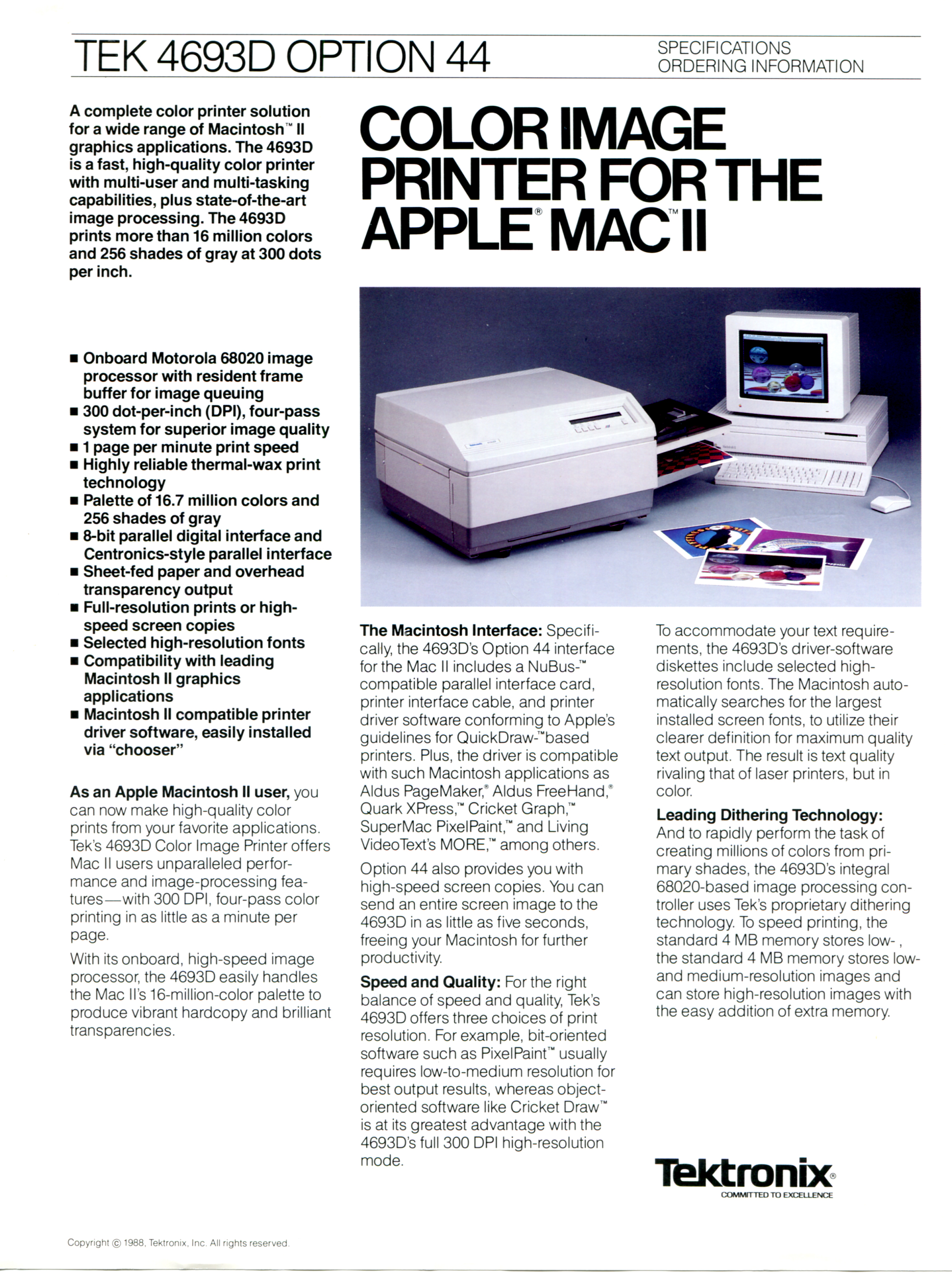 Click Image to View (requires PDF plugin) or Downlad a PDF of the full Document Tektronix introduced a color printer that used a colored wax transfer process. This would be the main competitor to Kodak's large format thermal printer. The Tek was not a true color printer like the Kodak. It used halftoning, requiring it's 100 dpi higher resolution to reproduce colors with dots. The Kodak thermal printer produced a continuous tone dot (at 200 pixels/inch) that could be any color not just a cyan, magenta, yellow or black dot. The Tek produces results that looked like low resolution magazine images. The Kodak printer created prints that looked nearly indistinguishable from a photograph. Convincing people on specs alone was going to be a big challenge. You had to see the difference in quality first hand to begin to understand how significant this difference is. John M, in marketing, suggested creating sample prints to hand out. And that would became one of my frequent requests for many tradeshows to follow. Nikon Scanner Transmitter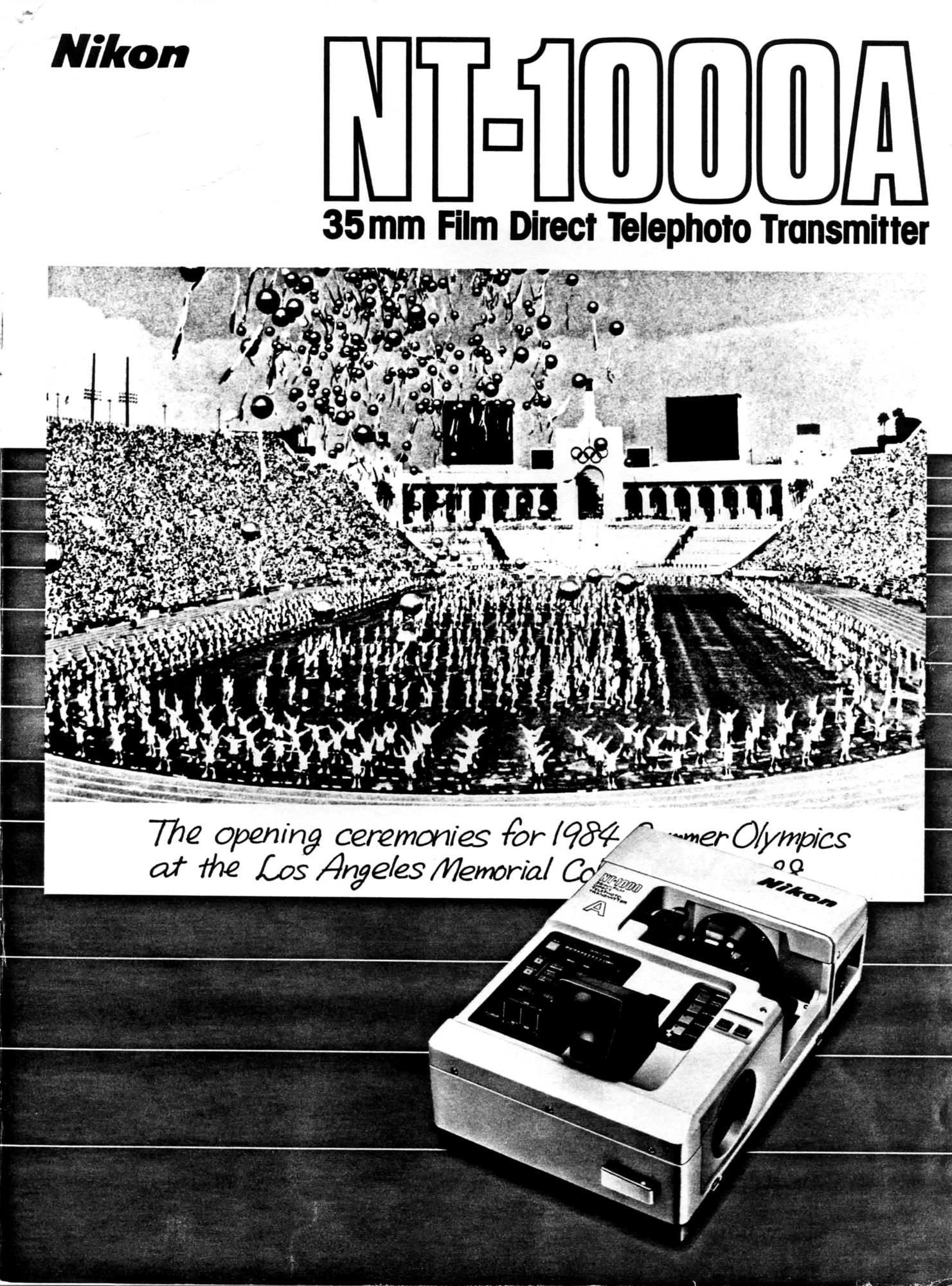 Click Image to View (requires PDF plugin) or Downlad a PDF of the full Document I was given a copy of this brochure and asked to put together specifications and aproposal for something similar that Kodak would build or contract to build. You can view the Protocol Document I created further down the page User Interface Design for New DPTS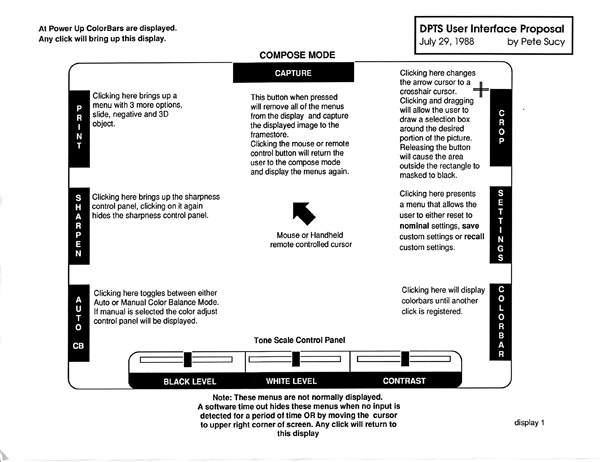
Protocol DocumentsIt was decided that we needed a process to have everybody (prod dev, mktg, sales, management) sign off on going forward with new product. I was asked to create a template (remember I was the official scribe) for a Protocol Document. Using Pakemaker 3.0, created the official document with signature spaces, on the title page. I also was illustrating most of them with at least a concept of how the product might look. These were created using Adobe Illustrator. Much of 1988 was spent creating Protocol Documents for all of EPD, a good number of them were my product ideas. Below are a few of my own proposals. Digital Storage Device Click Image to View (requires PDF plugin) or Downlad a PDF of the full Document Realizing from my experience that digital storage was far superior to analog, I'd been pushing for a digital storage solution for much of the past year. This protocol document was for an optical disk storage unit with expansion for othr types of storage devices (floppy, hard and Flash drives. It was basicaly FrameServer without an operating system. This one went nowhere, still too much like a computer. Common EPD Electronics Platform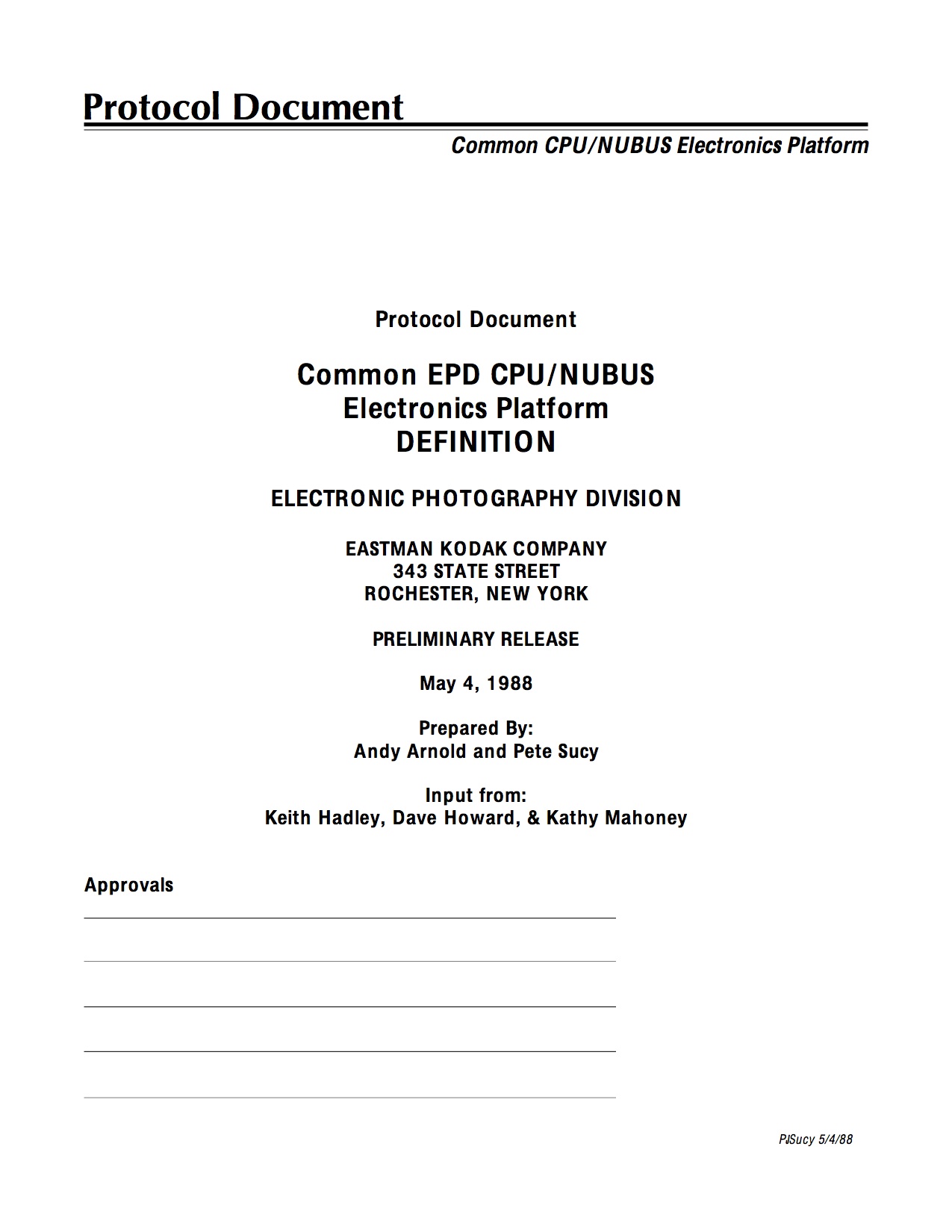 Click Image to View (requires PDF plugin) or Downlad a PDF of the full Document One idea that seemed to make sense to me was the development of a single basic motherboard for all our products. Working with the lead engineers on each of the current projects we managed to agree that we standardize on one CPU/development system, so that common code could be developed and placed in a library for use in all products. I'd proposed the Macintosh II's NUBUS platform which I felt was a robust choice. Especially since the growth of the new desktop publishing, video editing, & presentation markets were primarily Macintosh based. I still envisioned a dedicated workstation for image editing, like FrameServer. However, intitally this proposal was written for Gen II Still Video devices, but would position us for a digital path forward. SV630 Interface/Software for SV6500 Printer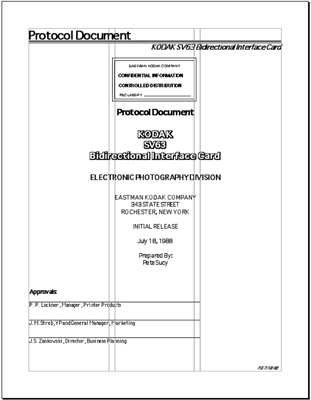
Click Image to View (requires PDF plugin) or Downlad a PDF of the full Document This was an idea I had when I heard of the SV63 Developer's Kit for PC's, which consisted of a printer utility and the API's for controlling the printer so a developer could write software it. However, I was proposing that we develop a Mac application of our own with the capability to capture images in the printer's framestore and upload them to the Mac for image editing and the printing. 35mm Laser Thermal Printer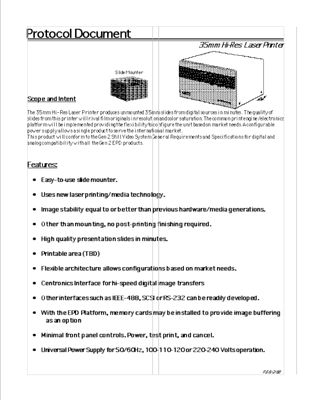
Click Image to View (requires PDF plugin) or Downlad a PDF of the full Document Transbit Scanner/Transmitter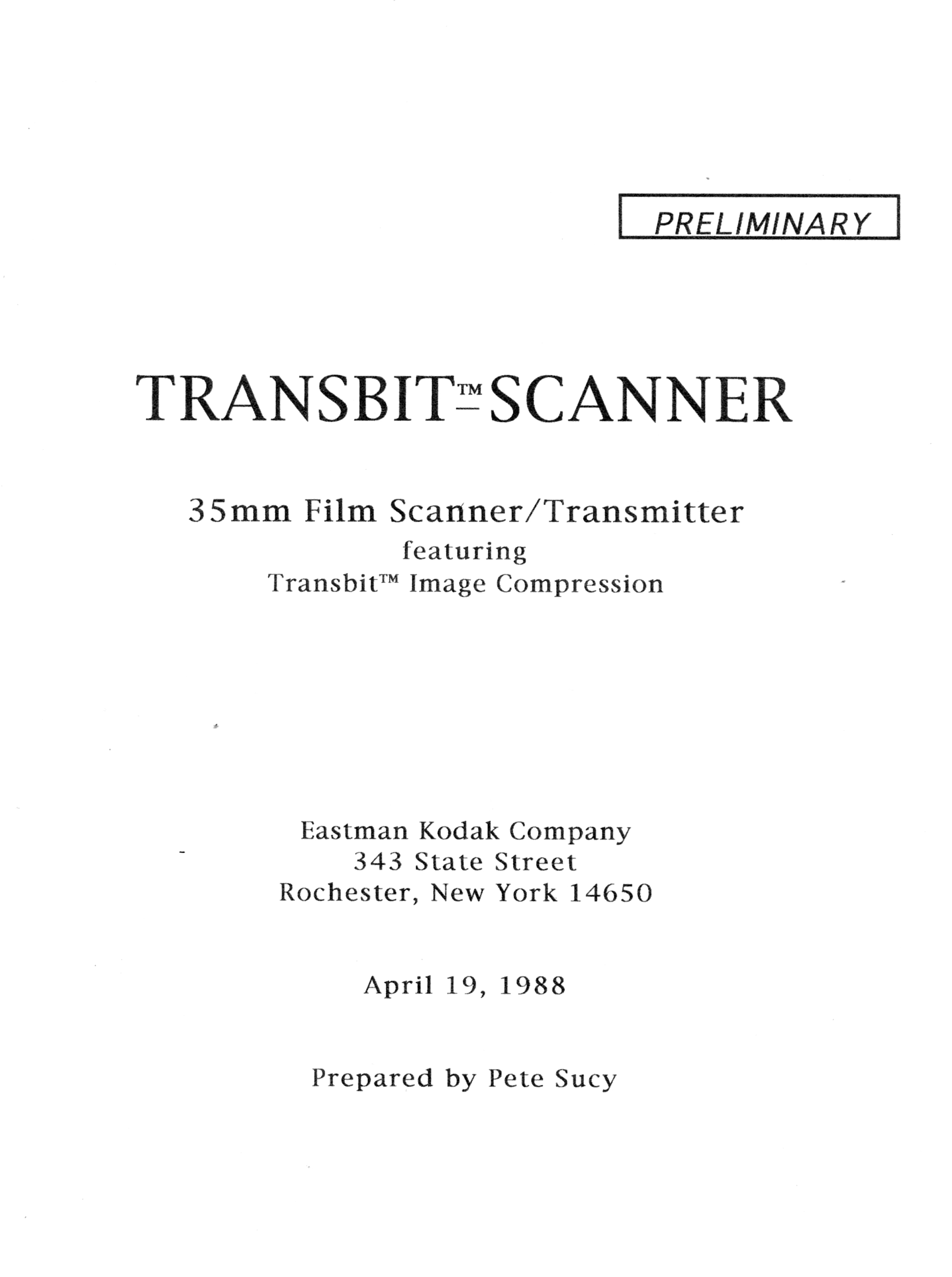 Click Image to View (requires PDF plugin) or Downlad a PDF of the full Document Just a few of the many more that were written for others.The folder of Pagemaker documents created for Protocol documents has about fifty that were created during this year. As I recover the documents that I don't have paper copies of, I will post some more here.
Gen II Medium Format Printer
Click Image to View (requires PDF plugin) or Downlad a PDF of the full Document Large Format Thermal Printer (XL7700)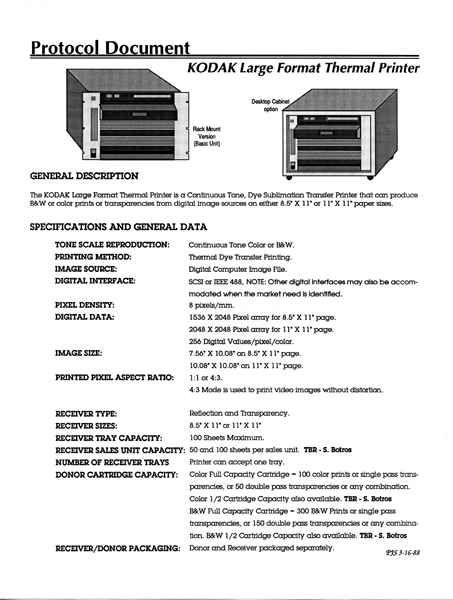
Click Image to View (requires PDF plugin) or Downlad a PDF of the full Document Gen II Video Transceiver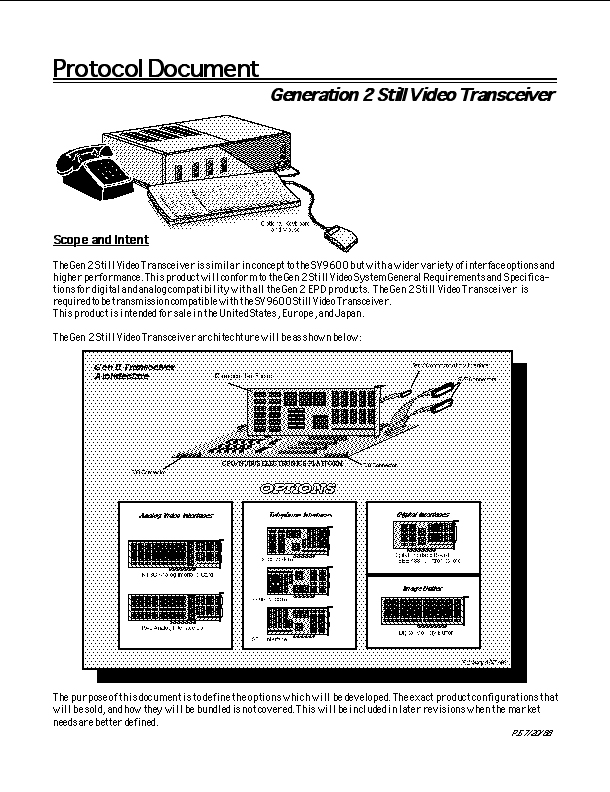
Click Image to View (requires PDF plugin) or Downlad a PDF of the full Document CCD1000 Video Camera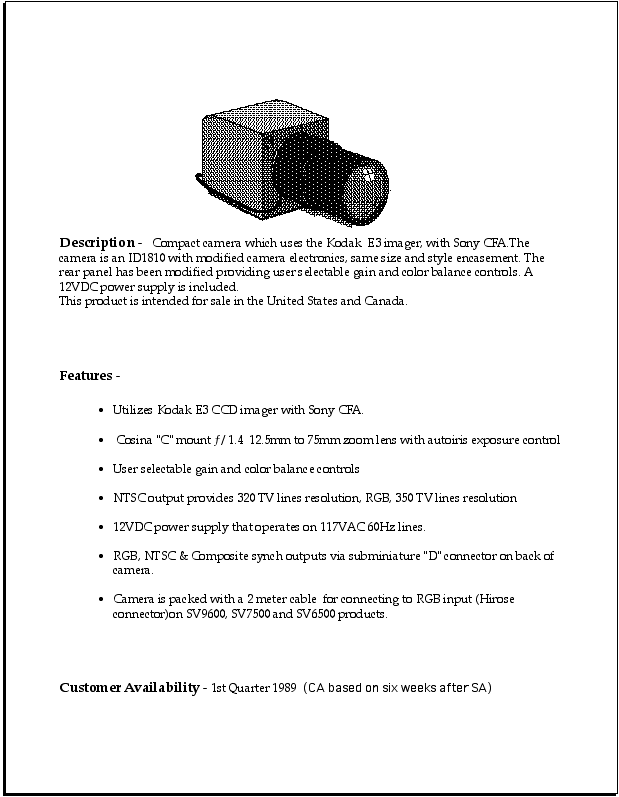
Click Image to View (requires PDF plugin) or Downlad a PDF of the full Document European NTSC 7550 Multidisk Recorder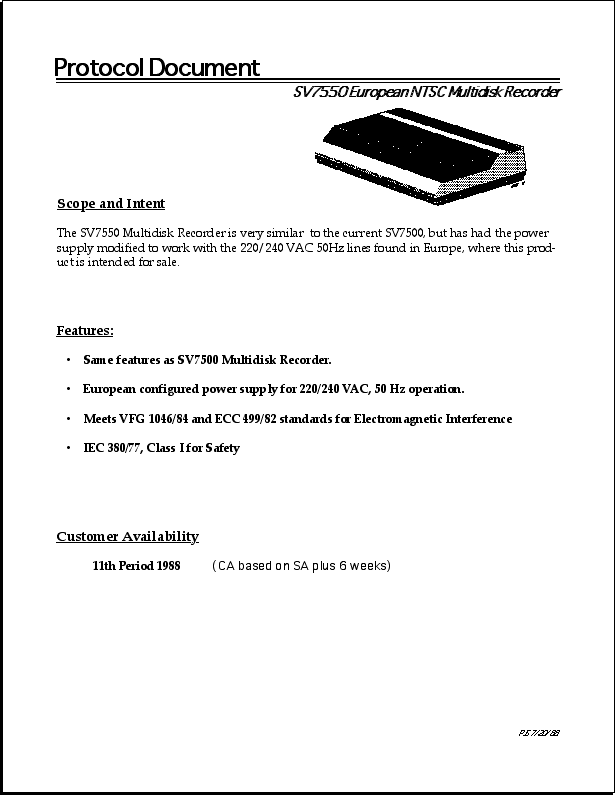
Click Image to View (requires PDF plugin) or Downlad a PDF of the full Document And Then There were Requirements DocumentsAfter the protocols were reviewed and signatures obtained from all involved, management, marketing, sales, and the bean counters, the idea advanced to the next phase, the requirements document. This document would be used to guide development of the actual product. These also went through the review process involving more input from development and manufacturing. Every proposal that got this far, actually still had a slim chance of becoming product. Things, (technical issues, new OEM products, internal competition) would come up leading to the demise of the project. The project above never made it past the point but let to the Kodak Rapid Scanner. Hypercard Stack Powering the SV7500In order to demonstrate the value of drivers for our products, I wrote this Hypercard program and my office mate Craig wrote the XCMD/XFCN's (small driver interfaces to communicate via the serial port from Hypercard). It took about a month of work to perfect the timing and operation. Basically, it is a presentation/database builder that allows you to link photos on Still Video Floppies in your SV7500 tray. The Tray screen allowed you to directly click on a graphic representation of the currently available SVF's in SV7500's tray and then advance to the desired image number on the disk. There were buttons to link a photo to a a "page" in Hypercards database. Whenever you accessed that page it would also access the proper image on the SV7500. As long as you didn't move the floppies around in the tray. There was no identifying number that could be read by the SV7500. I proposed putting bar codes on the floppies during manufacture, so they could be read by a barcode reader in the SV7500 as they were accessed so mixing the floppies would not cause problems.
I was asked to demonstrate it at the upcoming MacWorld convention in January. More System Diagrams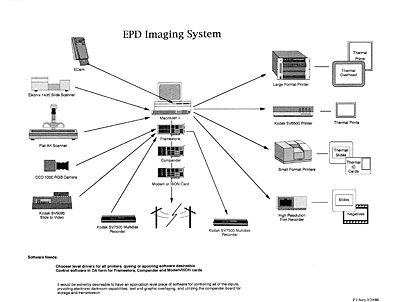 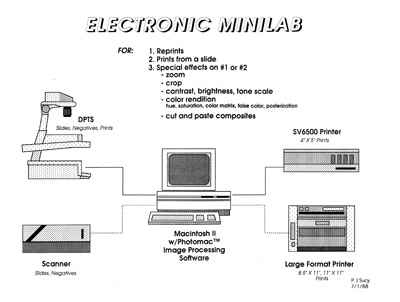 Thermal Process Illustraton |
